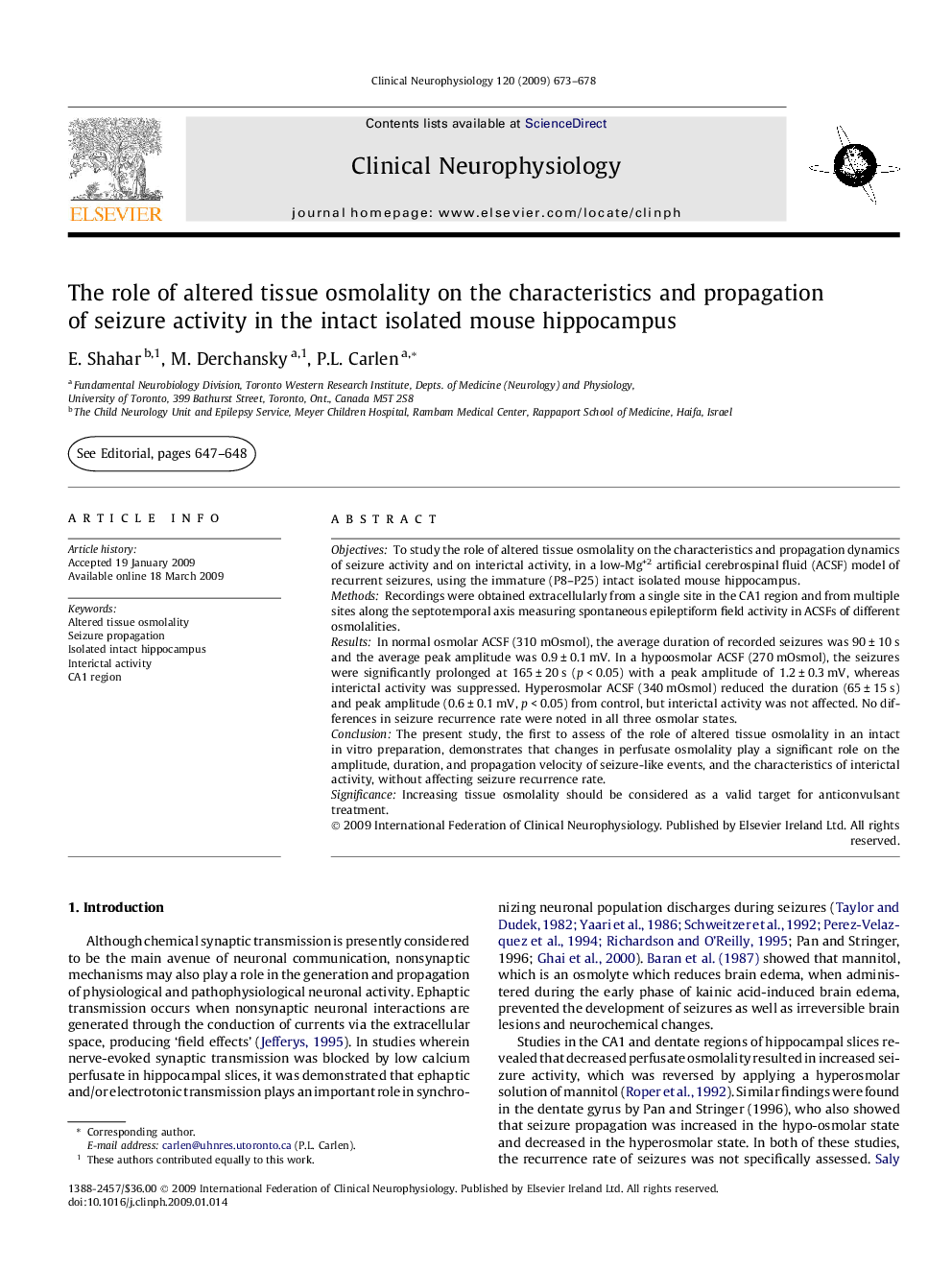| Article ID | Journal | Published Year | Pages | File Type |
|---|---|---|---|---|
| 3046311 | Clinical Neurophysiology | 2009 | 6 Pages |
ObjectivesTo study the role of altered tissue osmolality on the characteristics and propagation dynamics of seizure activity and on interictal activity, in a low-Mg+2 artificial cerebrospinal fluid (ACSF) model of recurrent seizures, using the immature (P8–P25) intact isolated mouse hippocampus.MethodsRecordings were obtained extracellularly from a single site in the CA1 region and from multiple sites along the septotemporal axis measuring spontaneous epileptiform field activity in ACSFs of different osmolalities.ResultsIn normal osmolar ACSF (310 mOsmol), the average duration of recorded seizures was 90 ± 10 s and the average peak amplitude was 0.9 ± 0.1 mV. In a hypoosmolar ACSF (270 mOsmol), the seizures were significantly prolonged at 165 ± 20 s (p < 0.05) with a peak amplitude of 1.2 ± 0.3 mV, whereas interictal activity was suppressed. Hyperosmolar ACSF (340 mOsmol) reduced the duration (65 ± 15 s) and peak amplitude (0.6 ± 0.1 mV, p < 0.05) from control, but interictal activity was not affected. No differences in seizure recurrence rate were noted in all three osmolar states.ConclusionThe present study, the first to assess of the role of altered tissue osmolality in an intact in vitro preparation, demonstrates that changes in perfusate osmolality play a significant role on the amplitude, duration, and propagation velocity of seizure-like events, and the characteristics of interictal activity, without affecting seizure recurrence rate.SignificanceIncreasing tissue osmolality should be considered as a valid target for anticonvulsant treatment.
